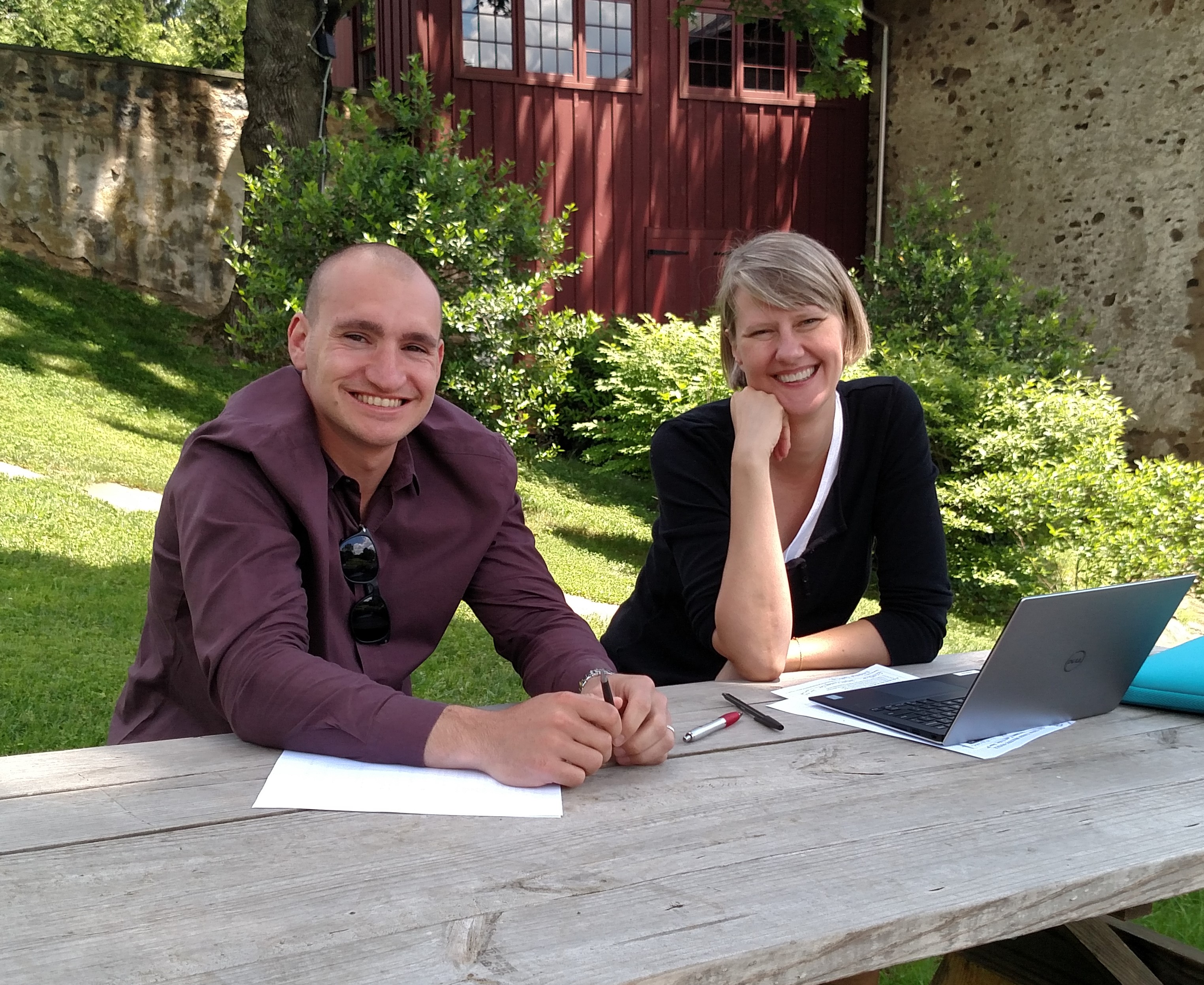
Lernia Training Solutions was founded over fifteen years ago by Jill Huentelman, one of the most strategic and proactive business people with whom I’ve had the pleasure of working. The recipient of several fastest-growing company awards in the Greater Philadelphia region where their headquarters is located, the company now provides training and development services and products for dozens of clients around the world.

Jill’s background is in training and the company’s sweet spot is focused on providing compliance and IT and Systems training to pharma, medical device and biotech companies. Specifically, those companies which are highly regulated by the FDA and other government agencies – and – have a “chain of accountability” where documentation of processes and procedures is critical to ensure safety. Over the past decade this market has grown significantly helping to propel Lernia’s growth, but to stay ahead of the curve regarding constantly changing governmental regulations, Jill and her team dedicated significant attention and time.
Jill knew that Lernia’s continued success and growth wasn’t guaranteed. She wanted profitable growth, not just growth for growth’s sake. She also wanted more predictability in her revenue stream which, because of her client base, ebbed and flowed. Making a very deliberate decision to adopt a CEO mindset of discipline, planning and execution to ensure that growth, she began to take the steps that were required to drive profitability and sustainability, not just growth.
 1) A Community of her Peers – As Jim Collins says, the difference between a great leader and a merely good one is humility. And Jill has that in spades. Knowing that she didn’t have all the answers herself, or even all the right questions, she sought out a CEO Roundtable that fostered accountability combined with business best practices for their members and joined CEO Think Tank®. “Being a part of CEO community that held me accountable, asked clarifying questions that got to the root of my issue, and then provided the tools to tackle the challenge, was indispensable to our goal of increasing profitability while growing organically.”
1) A Community of her Peers – As Jim Collins says, the difference between a great leader and a merely good one is humility. And Jill has that in spades. Knowing that she didn’t have all the answers herself, or even all the right questions, she sought out a CEO Roundtable that fostered accountability combined with business best practices for their members and joined CEO Think Tank®. “Being a part of CEO community that held me accountable, asked clarifying questions that got to the root of my issue, and then provided the tools to tackle the challenge, was indispensable to our goal of increasing profitability while growing organically.”
2) Education and Teambuilding for the Leadership Team – Using Verne Harnish’s One Page Strategic Plan® and the Four Decisions framework, during Lernia’s growth stages, the leadership team proactively managed the long-term plan for the company, and their 90 Day Rocks and individual accountabilities. Jill’s team not only created the plan but met every quarter to learn from their successes and mistakes, educating themselves in the process on the “business of business”. They also refined their communication, talent management and meeting systems to keep her growing staff in the loop and engaged.
 3) Access to a Robust Business Tool Kit – Lernia’s Leadership team got their Execution and Strategy “recipe” on track and the company flourished. Over the next year the business grew significantly. Then, they hit a speed bump – what Greg Crabtree, the author of the best-selling book “Simple Numbers” calls “the Black Hole of Profitability” which typically strikes companies someplace between $2 Million and $5 Million of top-line revenue. Jill realized that the profitability problem that the business had was not just hers in isolation, after hearing Greg’s talk at a CEO Think Tank® Speaker’s event. Instead, it was a predictable problem of growth that many other companies went through. More importantly – there was a solution.
3) Access to a Robust Business Tool Kit – Lernia’s Leadership team got their Execution and Strategy “recipe” on track and the company flourished. Over the next year the business grew significantly. Then, they hit a speed bump – what Greg Crabtree, the author of the best-selling book “Simple Numbers” calls “the Black Hole of Profitability” which typically strikes companies someplace between $2 Million and $5 Million of top-line revenue. Jill realized that the profitability problem that the business had was not just hers in isolation, after hearing Greg’s talk at a CEO Think Tank® Speaker’s event. Instead, it was a predictable problem of growth that many other companies went through. More importantly – there was a solution.
4) Figure out your 9 Building Blocks – Lernia started to identify their path to increasing profitability by looking inward first. Using the Business Model Canvas (developed by Alex Osterwalder) as a framework, Lernia analyzed their customer segments, value propositions, channels, customer relationships, revenue streams, key resources, key activities, key partnerships and cost structure. Jill realized that the major challenge limiting their growth and profitability was that their cost structure, key resources and key activities were not aligned with their customer segments and committed value proposition. “We had a moment,” says Jill, “Where we realized that if we were to continue the way we were going, we would likely be out of business within the year. Even if we were profitable, we could still go out of business, if the cash flow didn’t line up. That was a sobering thought, and one that I wasn’t ready to accept.”
 5) The “Secret Sauce” – Jill and her team also learned from hearing Greg Crabtree speak that to deal with the “black hole”, optimizing their Labor Productivity Ratio needed to be a critical part of their One Page Strategic Plan™. Why? As Crabtree puts it, “Labor is consistently the highest cost in almost all business models. If a business can optimize Labor Productivity, they have tuned up one of the most important expense items in the business to ensure profitability.”
5) The “Secret Sauce” – Jill and her team also learned from hearing Greg Crabtree speak that to deal with the “black hole”, optimizing their Labor Productivity Ratio needed to be a critical part of their One Page Strategic Plan™. Why? As Crabtree puts it, “Labor is consistently the highest cost in almost all business models. If a business can optimize Labor Productivity, they have tuned up one of the most important expense items in the business to ensure profitability.”
6) Commit to Taking Action – Ultimately through all her analysis, Jill realized that her business model wasn’t right for her industry. If they were to regain profitability and create a sustainable company, the company had to change. After reorganizing internally to ensure that their key resources and cost structure matched the variability of their customer needs, they were able to see what was working and what wasn’t. First, they were able to measure productivity and profitability by client. In doing so, they realized that some clients more profitable than others.
Lernia also became more selective about their customers, choosing to only work with those who were aligned with their culture and core values. They created a more flexible resourcing model that matched resourcing competencies with their customer needs – in turn creating more repeat business. As Jill shares, “Saying “no” to any customer is difficult; but it allowed us to focus on the customers we could serve well and were a cultural fit for us. That decision helped us retain great talent, and drive profitability. It was a win-win.”
The Bottom Line? The company saw their net profitability increase consistently over the next three years, averaging 13%. And – they generated a significantly stronger balance sheet with over six months Core Capital in the bank and the cash to re-invest in their next strategic offering, launching this year!
Jill’s biggest learning as she’s navigated the growth curve?
“The path to growth and profitability is generally never a straight line up; rather, you have to be willing to make hard decisions to ensure that long-term, the business is able to not only survive, but thrive,” she shares with me. “Right now, from a growth perspective, we are in a retrenchment phase. But, we have the right structure in place, the right assets ready to go and I consider us ready to take on the next growth spurt as it organically happens. After 18 years in business, it’s a great place to be.”
Tags: Business advice for the mid-market, Executive Education for Small Business, Executive Roundtables, Leadership Development in New Jersey, Leadership Development in Philadelphia, Overcoming small business challenges, Small business advice, Small Business help, Strategic planning for small business
